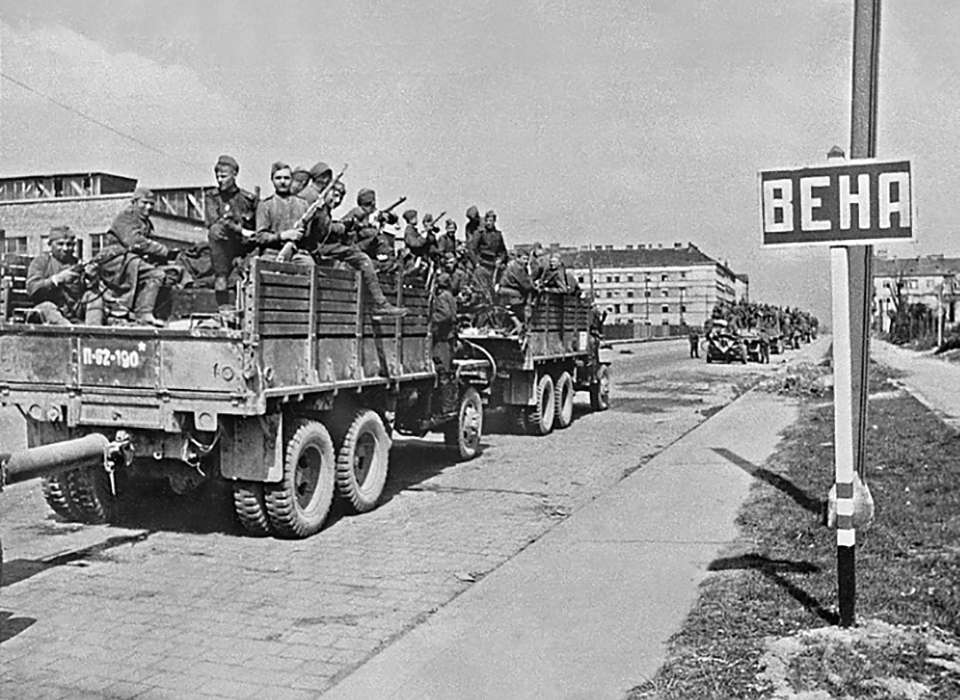On April 13, 1945, Soviet soldiers of the 2nd and 3rd Ukrainian Fronts completed their conquest of Vienna, the Austrian city where Hitler had spent six years before World War I as a starving artist.
By the time Soviet soldiers approached Vienna’s suburbs on April 3, 1945, the city had already endured over 50 Allied bombing raids in the course of the war. These attacks destroyed more than a fifth of the city’s housing, an estimated 80,000 apartments. From Hitler’s bunker beneath Berlin, the German dictator issued orders to his commanders to hold Vienna at all costs. But as the Soviet assault on Vienna’s southern suburbs began, the German forces assembled to defend the city consisted of only the depleted II SS Panzer Corps, anti-aircraft units, Hitler Youth members, and convalescing soldiers. German forces were unable to delay the well-equipped Soviet forces and quickly retreated to the heart of the city. Nearly a week of heavy street fighting ensued, which destroyed many of Vienna’s historic buildings and seriously damaged all but one of the city’s bridges over the Danube River.
The German commanders struggled to retain control of their scattered units and officers resorted to holding isolated positions. Meanwhile, the 3rd Ukrainian Front moved to outflank Vienna and rushed towards Linz and Graz. Unable to hold out any longer, the remaining German defenders retreated northwards. By April 13, the battle for Vienna was over. In the wake of the city’s capture, large numbers of Soviet soldiers brutalized the population and looted the city. A period of general lawlessness followed until the situation began to improve as Allied troops from other nations arrived to begin the joint occupation of Vienna.
Austria fared marginally better than Germany in the immediate postwar world. In 1943, the Allies had agreed that Austria would be treated as a victim of Nazi aggression, but the ensuing Cold War put Austria at the center of a new ideological power struggle in Europe. Although the first postwar democratic City Council elections in Vienna took place in November 1945, Allied troops jointly administered and occupied Austria until May 1955. In 1955, the United States and Soviet Union reached an agreement whereby Austria declared its perpetual neutrality. In return, the two superpowers granted Austria full independence. On October 25, 1955, the last foreign troops left Austrian soil.
This article is part of an ongoing series commemorating the 75th anniversary of the end of World War II made possible by Bank of America.
Tyler Bamford
Tyler Bamford was the Sherry and Alan Leventhal Research Fellow at the Institute for the Study of War and Democracy at The National WWII Museum from 2019-2021. He obtained his PhD in history from Temple University and his BA in history from Lafayette College.
Cite this article:
MLA Citation:
APA Citation:
Chicago Style Citation:






![Max Fuchs, New York City cantor, sings as Rabbi Sydney [sic] Lefkowitz, Richmond, VA, conducts the first Jewish services from Germany.](/sites/default/files/styles/max_650x650/public/2025-10/image1.jpg)



